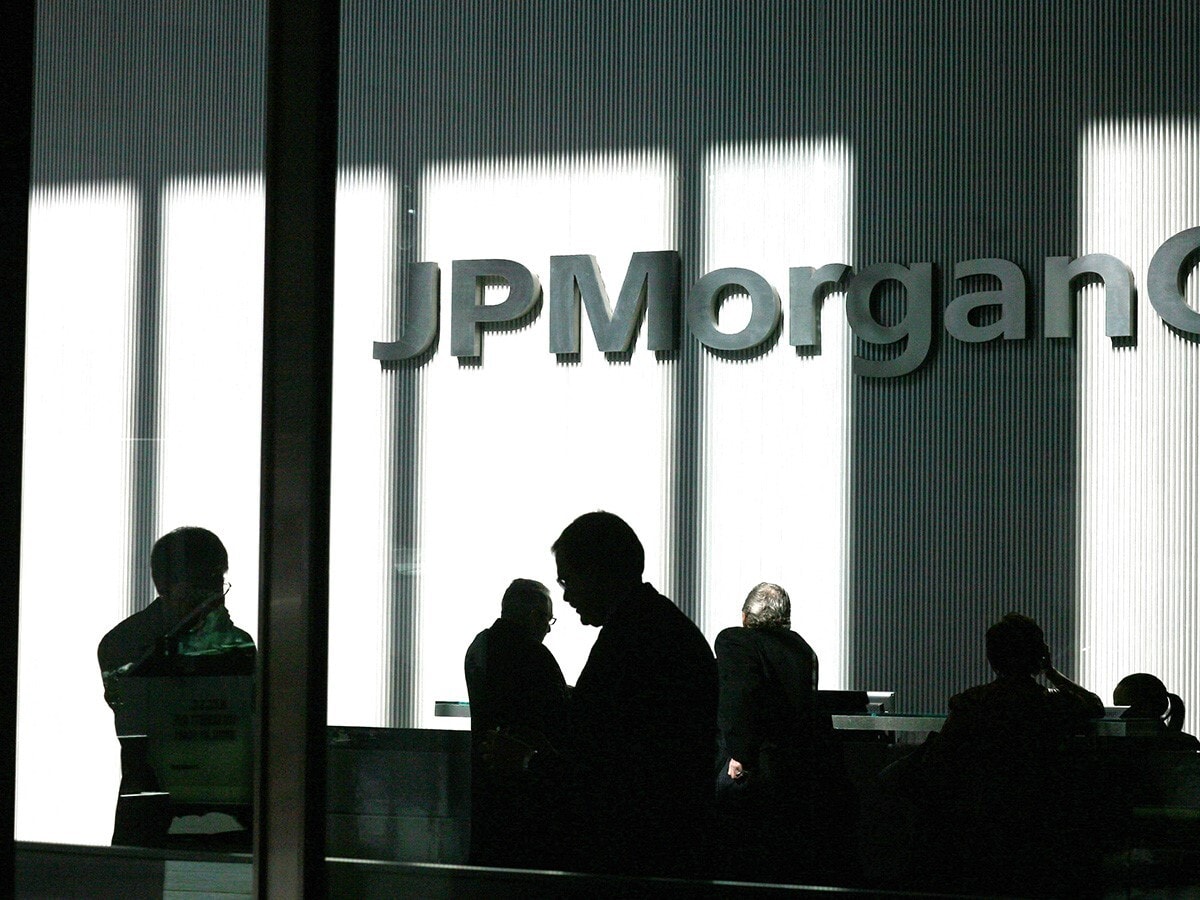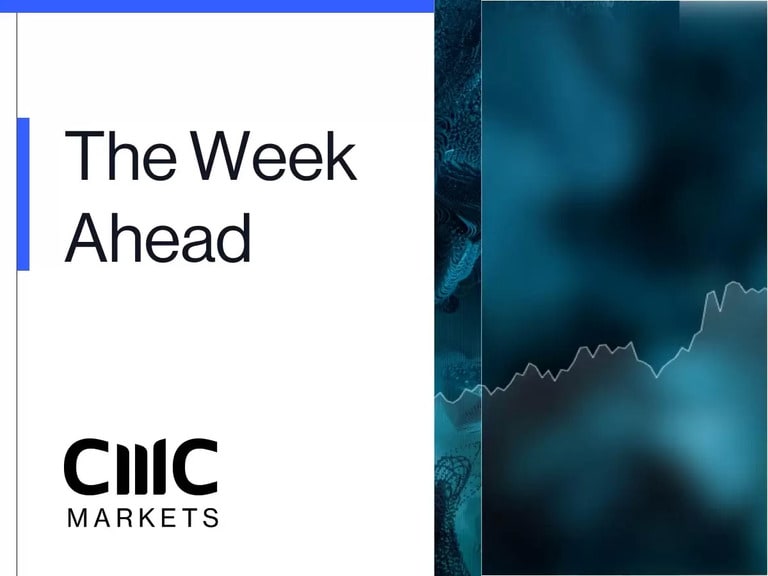US major banks, including JPMorgan Chase, Wells Fargo, and Citigroup, will start reporting their second-quarter earnings on 14 July. Recently, US banking stocks rebounded sharply after the 23 big banks passed the stress test, with the KBW Index up 5%, posting the first monthly gain since the regional bank’s turmoil in March. The results from the stress test cleared a hurdle for big banks to distribute payout to shareholders through raising dividends and buybacks, contributing to the instant rally in the financial sector. The net record interest income was also the key lifting big banks’ earnings in the first quarter. However, risks remain as the Fed is set to tighten regulations in the banking sector following the bank’s rout early this year. What key aspects should investors look at in the upcoming earnings reports?
The lucrative interest income may not sustain
The US big banks benefited from regional banks’ collapse by taking over small peers at a bargain. Most big banks, including JPMorgan Chase, Citigroup, and Wells Fargo, reported a profit surge due to Ballooned deposits and high-interest rates. JPMorgan Chase made a whopping profit of $12.6 billion, up 52% from a year ago. CFO Jeremy Barnum said the deposit inflow reached approximately $50 billion in the first quarter due to SVB and Signature Bank’s bank runs. However, the bumper profits may not sustain as the bank saw a 7% decrease in total deposits from a year ago, and the first quarter influx brought about a 2% growth in deposits sequentially The overall US bank deposits were seen a further drop in the first quarter, with a record decline of 2.5%. The industry-wide deposit outflows reached $472 billion in the first three months, according to the FDIC. This reflects the weakened confidence of depositors following the regional banks’ failure.
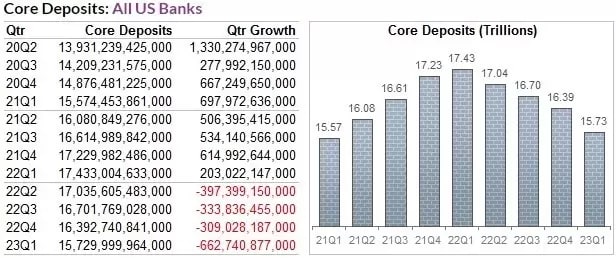
At the same time, the aggregate expense for all banks rose ten times from a year ago to $85 billion in the first quarter as banks had to raise interest rates to depositors due to money outflowing to higher yielders.
Home lending slows down
Another observation is that US bank loans and leases faced a bottleneck due to tightening lending conditions and declining home purchases. The US pending home sales index dropped 21% in May from a year ago after hitting the lowest growth level in April.
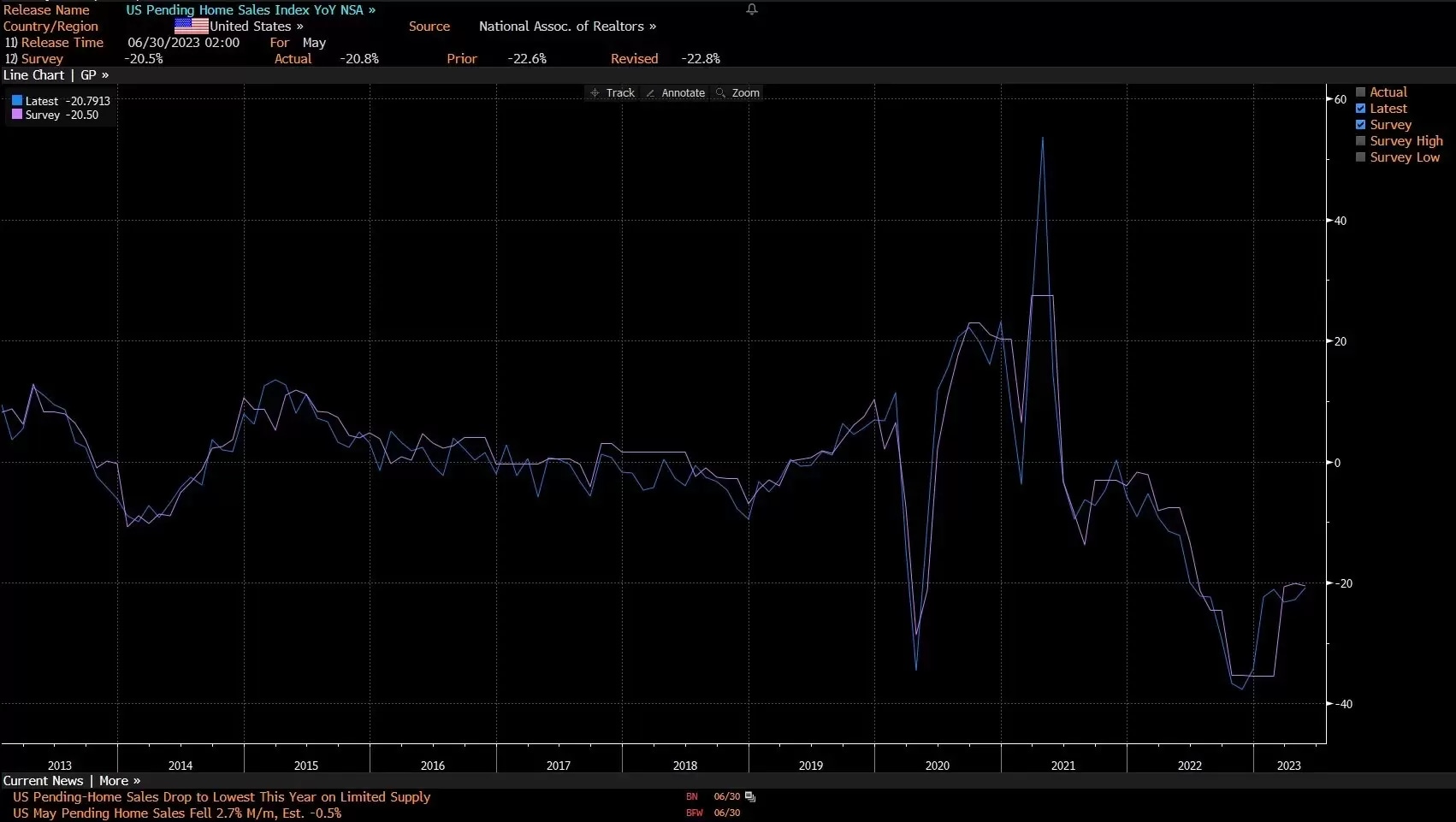
The total net loans of all US banks shrank by $20 million to $12.01 trillion in the first quarter, which was the first decline since Q1 2021. According to research by Deutsche Bank, most big banks are “pointing to flattish loans the rest of the year. “
JPMorgan Chase’s first quarter “home lending net revenue” dropped 38% year over year to $720 million, “largely driven by lower net interest income from tighter loan spreads and lower production revenue due to lower volume.” The division was also the only segment with negative revenue growth from a year ago, suggesting a deteriorating credit environment. Wells Fargo (WFC) had a similar trend of decline in home lending, down 42% annually, driven by “driven by lower originations and lower revenue from the resecuritization of loans purchased from securitization pools.” Auto also dragged on WFC’s overall performance, down 12%, “driven by lower loan balances and loan spread compression.”
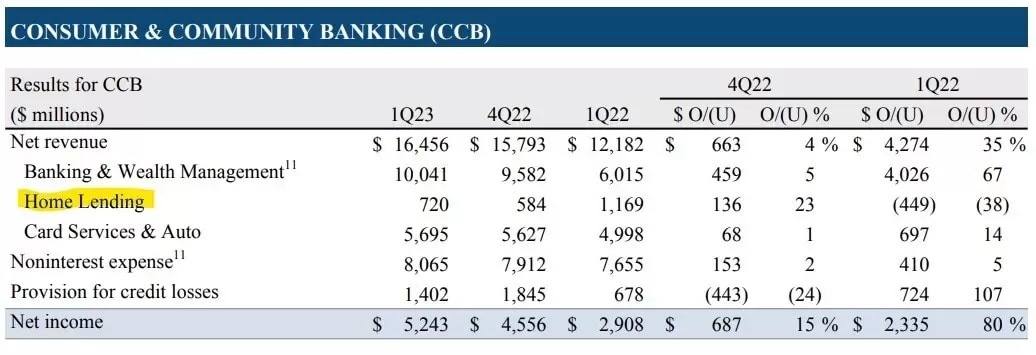

Source: Wells Fargo
Rising loan provisions and regulatory challenges
Big banks have been putting more funds aside for loan loss provisions as default risks increased due to Fed’s aggressive rate hikes and a potential rise in the unemployment rate. In the first quarter, JPMorgan Chase’s provision for credit losses was $1.4 billion, up from 678 million a year ago. Wells Fargo’s provision reached $868 million, or a 556% increase annually, and Citigroup’s provision for credit losses rose to $1.98 billion, up 7% from the prior quarter.
The big banks will also face regulatory challenges after the stress test, as the Fed indicated that they could face about a 20% increase in the amount of capital. JPMorgan CEO Jamie Dimon warned that the increase may further hurt lending.
As for the investment banking division, the IPO hasn’t come back, and trading activities may still be at a flat level, which may not offer much of an impact on these three banks’ performance. However, investment banks like Goldman Sachs and Morgan Stanley may continue to suffer the macro headwinds.
US banks’ downturn may have been priced in
Some institution researchers believe the above downside aspects should have been priced as big bank stocks all halved from their cyclical peak to the trough in October 2022. Hence, the instant price action to earnings reports may not reflect the industrial trend. Below is the earnings estimate by Barclays.
JPMorgan Chase: $3.65, + 32% annually
Citigroup: $1.40, -39% annually
Wells Fargo: $1.15, + 55% annually
Bank of American: $0.83, 17% annually
Goldman Sachs: $4.5, -42% annually
Morgan Stanley: $1.45, +0.7% annually
Disclaimer: CMC Markets is an execution-only service provider. The material (whether or not it states any opinions) is for general information purposes only, and does not take into account your personal circumstances or objectives. Nothing in this material is (or should be considered to be) financial, investment or other advice on which reliance should be placed. No opinion given in the material constitutes a recommendation by CMC Markets or the author that any particular investment, security, transaction or investment strategy is suitable for any specific person. The material has not been prepared in accordance with legal requirements designed to promote the independence of investment research. Although we are not specifically prevented from dealing before providing this material, we do not seek to take advantage of the material prior to its dissemination.
